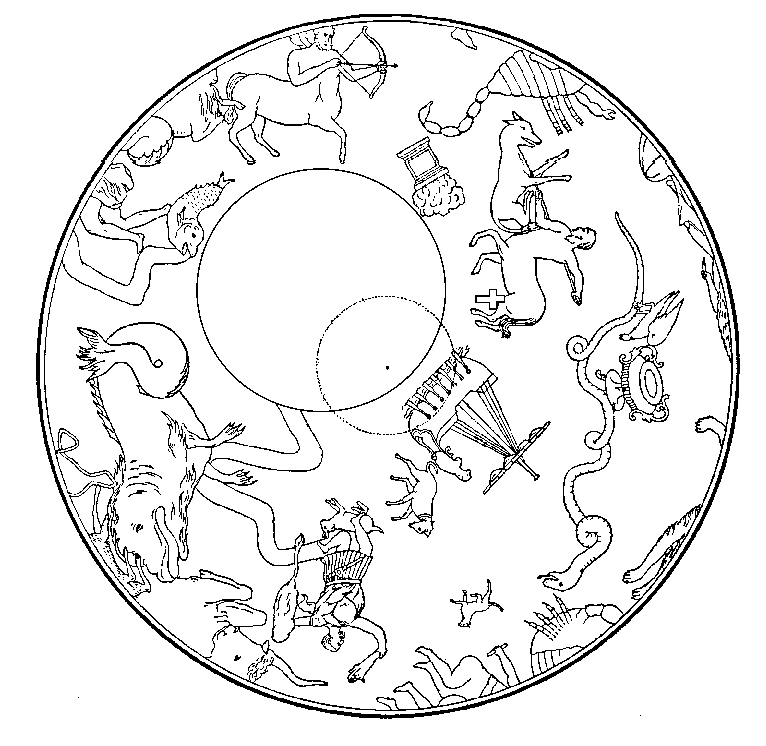
by John P. Pratt
29 Dec 2001
There has been much speculation as to the origin of the constellations. Until recently it has usually been assumed that they evolved from the fancies of primitive imaginations, but research now suggests that they were designed as a pictorial scientific coordinate system. A coordinate system is a set of imaginary lines for measuring positions, like the lines of latitude and longitude for determining locations on the earth. The constellations perform a similar function, but they employ pictures, which make it easy to identify stars without need of instruments. Moreover, this evidence points to a time and place that they originated: about 2700 B.C at about 36° north latitude. There are three main lines of evidence that point to this date and location.[1]
 |
Slanted Constellations. Many of the constellations are tipped at an angle to the natural directions of north, east, south and west. If one asks if there was a time and place when they would have all been much aligned vertically and horizontally, the answer is, about 2900 B.C. Note that this is an entirely different line of reasoning, but it yields a very similar date and location of origin. Moreover, several of the constellations mark astronomically important areas at the date. For example, the long snake Hydra would have coincided with the circle called the celestial equator.
Star risings and settings. The ancient Greek poet Aratus states that certain stars rise at the same time, or set at the same time, or that one rises as another sets on opposite points on the horizon. Because of the earth's precession, such coincidences depend on both the location on the earth and on the date of observations. Using statistical methods, it has been found that Aratus was describing the stars at a latitude of about 36° (within about 2°) at about 2600 B.C. (within 800 years).
Latitude 36° is too far north for Egypt, and too far south for the Greeks, but perfect on both counts for Sumeria (the civilization from which Babylon inherited much of its science). Accordingly, the Sumerians are now generally credited with originating the constellations. Note, however, that the Sumerians flourished closer to 2000 B.C., and that the evidence is more consistent with the Hebrew tradition that antediluvian patriarchs originated the constellations.
1. All three arguments are summarized in Hugh Thurston's Early Astronomy, (New York: Springer-Verlag, 1994), p. 135-137.